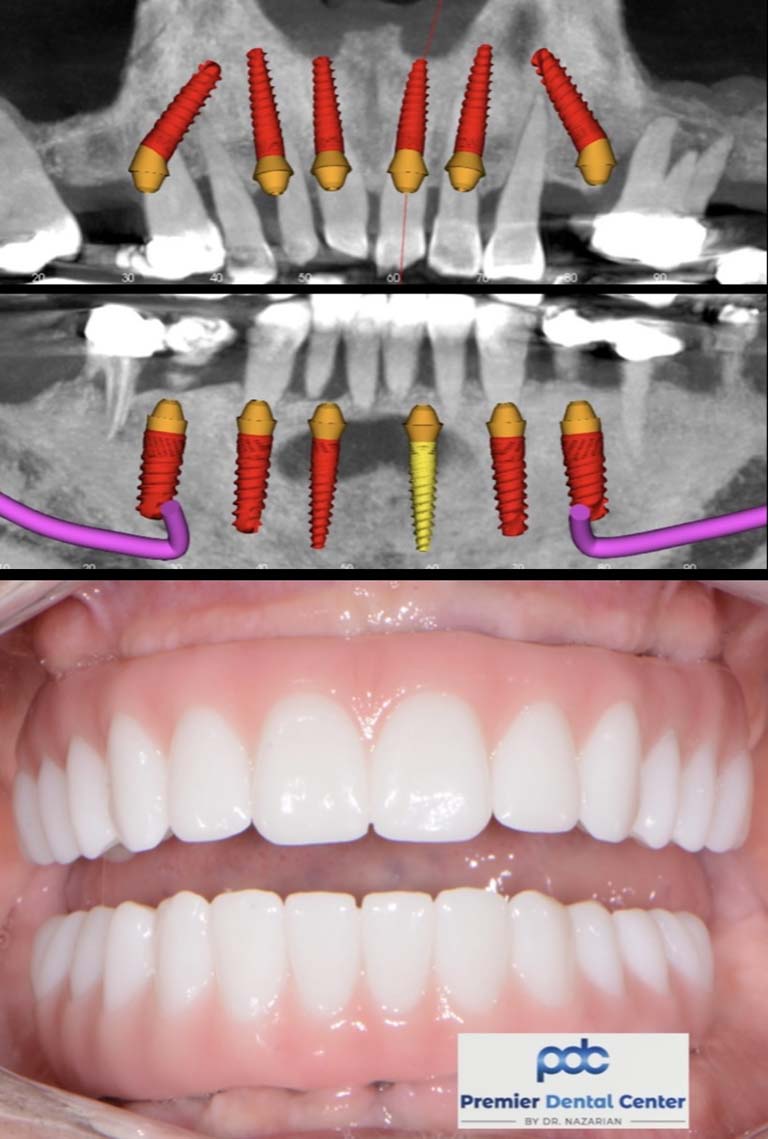The Of Dental Sense
The Of Dental Sense
Blog Article
Some Known Incorrect Statements About Dental Sense
Table of ContentsThe smart Trick of Dental Sense That Nobody is Talking AboutThings about Dental SenseSee This Report on Dental SenseDental Sense Fundamentals Explained
are medical tools operatively implanted right into the jaw to bring back an individual's ability to eat or their look. They supply assistance for synthetic (phony) teeth, such as crowns, bridges, or dentures. When a tooth is shed because of injury or illness, a person can experience problems such as rapid bone loss, malfunctioning speech, or adjustments to chewing patterns that cause discomfort.Dental dental implant systems include a dental implant body and oral implant joint and may additionally consist of an abutment fixation screw. Wisdom tooth cavity. The dental implant body is operatively put in the jawbone instead of the tooth's origin. The dental implant abutment is usually affixed to the implant body by the joint fixation screw and extends via periodontals into the mouth to support the connected man-made teeth
(https://businesslistingplus.com/profile/dentalsense1/)Structure of The Oral Implant System selecting dental implants, speak with your dental service provider regarding the prospective advantages and risks, and whether you are a candidate for the treatment. Things to consider: Your total health and wellness is a vital consider establishing whether you are a good prospect for dental implants, for how long it will require to recover, and for how long the dental implant might stay in area.
Cigarette smoking might impact the healing process and decrease the lasting success of the dental implant. The healing procedure for the implant body may take a number of months or longer, throughout which time you generally have a temporary joint in location of the tooth. the dental implant treatment: Thoroughly adhere to the oral health instructions offered to you by your dental service provider.
The 10-Minute Rule for Dental Sense
Implant failure can cause the demand for another operation to fix or replace the implant system. Restores the capability to eat Brings back aesthetic appearance Aids maintain the jawbone from shrinking because of bone loss Maintains the health of the bordering bone and gum tissues Aids keep surrounding (neighboring) teeth steady Enhances lifestyle Damages to bordering all-natural teeth throughout implant positioning Injury to the surrounding cells throughout surgery, such as sinus perforation Injury throughout surgery (as an example, fracture of surrounding jawbone) Inadequate function, such as seeming like the teeth do not bite together usually A feeling that the tooth hangs or turning in position arising from a joint screw loosening up Implant body failing (looseness of the dental implant body) due to systemic infection, which may be most likely in clients with uncontrolled diabetics issues because of regional infection in bone and periodontals supporting the implant body because of postponed healing, which may be more most likely in people who smoke Trouble cleansing the gum tissues around the dental implant, leading to bad oral hygiene Neglected periodontal condition Post-surgical feeling numb as a result of nerve impingement or damages Always notify health treatment service providers and imaging specialists that you have dental implants prior to any type of magnetic vibration imaging (MRI) or x-ray treatments.
FDA is not familiar with any type of unfavorable events reported for MRI or x-ray treatments with dental implants. Oral implants systems are commonly constructed from products that follow international consensus standards of the International Company for Standardization (ISO) or ASTM International. These standards have information of what makes a secure material.

An oral implant is a framework that changes a missing tooth. With screw-like devices, the cosmetic surgeon inserts an implant into the jawbone, and it acts as an anchor for a fabricated tooth, called a crown.
7 Easy Facts About Dental Sense Described
Some individuals are not qualified for dental implant surgery. It is for oral cosmetic surgeons to operate on people with: acute illnessuncontrollable metabolic diseasebone or soft cells illness or infectionIf these problems are settled, an individual can have the surgical procedure. In, dental surgeons refrain from operating people with: If people with any of the above undertake oral implant surgical treatment, there is a higher threat of the implant falling short.

Oral implant surgery is a customized procedure. Provide you time to heal. Attach the blog post and last crown, bridge or denture.
Next off, your doctor will carefully place the dental implant right into your jaw. Your cosmetic surgeon will reposition your gum tissues and close the laceration with stitches. If your dental implant is near the front of your mouth, your dental professional will make a temporary tooth for you to use until you recover. By doing this, you won't have a gap in your smile while you recoup.
Fascination About Dental Sense
Your copyright can inform you what to expect in your scenario. During the recovery stage, your jawbone ought to fuse to the oral implant. This process, called osseointegration, is critical for security and long-term success. This process can take anywhere from 3 to nine months. Sometimes, it might take longer.
Once your dental implant heals, your dental practitioner can affix the joint (little adapter post) and your final restoration (crown, bridge or denture). This typically takes about one hour to finish and might need a 2nd minor surgery. You shouldn't really feel any discomfort throughout your dental implant treatment because your supplier will use medication to numb your gums.
Report this page